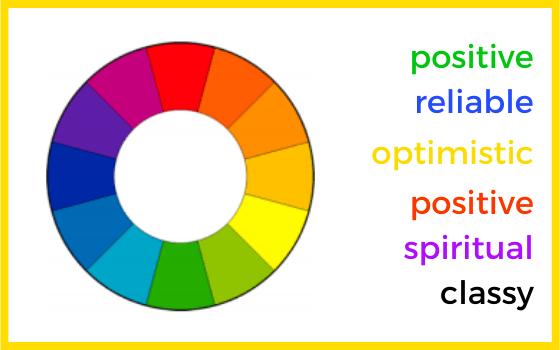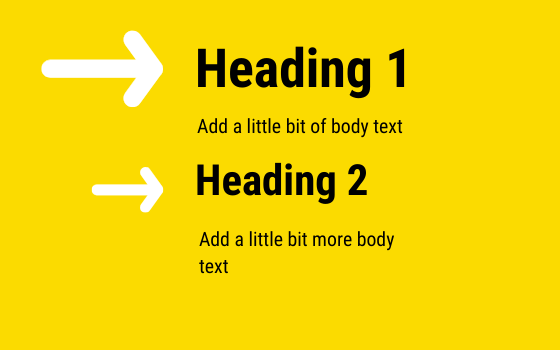How to Write Website Copy : our Top 10 Tips

Writing for your website is different to writing for print because people read differently online.
Imagine website copy as a conversation, rather than a lecture.
Website copy has to look different and work differently because visitors scan rather than read from top to bottom. Their eyes jump around from headline to headline, while they scroll, hover and click.
All your website copy needs to let your visitor learn something or do something.
Attention span can be as little as two seconds when someone first lands on a page, so your copy has to engage straight away.
Here’s 10 tips to improve your own website copy.
1 Find a consistent voice.
Write a list of qualities that represent your brand, and include the opposite qualities. For example:
- Fun but not silly
- Confident but not cocky
- Smart but not stodgy
- Informal but not sloppy
- Helpful but not overbearing
- Expert but not bossy
- Weird but not inappropriate
A full-blown style guide won’t be necessary, but making a note of how you write different words is a useful shortcut:
- 1 or one (we use 1)
- “double quotation marks” or ‘single quotation marks’ (we use double)
- two-thirds or 2/3 (words for us)
- 1980s or ’80s (1980s for us – and never 1980’s!)
Mailchimp has a great Content Style Guide, which is written for their own employees but contains lots of useful pointers for writing website copy in general.
If you’ve already got a consistent voice on social media, continue this in your website copy. Use a friendly tone of voice, but don’t use that as an excuse for sloppiness – see No. 10 below.
Two differences to social media copy:
- Use exclamation marks only occasionally – and never more than one.
- Emojis on your website? Never.

2 Focus on how you help, not what you do
Visitors will come to your website to find out something or to do something.
Instead of focusing on yourself and how brilliant your products or services are, paint a picture that lets your audience see how their life will improve with what you offer.
Identify a problem – here, it’s writing website copy because it’s what our clients struggle with most. Then help solve it.
3 Have a conversation in your content.
Website copy is all about having a conversation, not giving a lecture.
- Use the active voice, rather than the passive voice, because it’s less formal. To spot the passive voice, look out for any “to be” words (am, is, are, etc) or “by” towards the end of your sentence – “The shoe was chewed by the dog” is with a passive voice, whereas “The dog chewed the shoe” is with an active voice.
- Use the first person (I or we), not the third person (s/he or they). If there is only one of you, don’t be afraid to use “I” – you are your business’s best selling point, so make sure people know that it is you, and only you, who they will be lucky enough to get.
- Use the present tense wherever possible – it might not be what you were taught at school, but it makes your copy more natural.
(If you’re a bit of a grammar geek (like me), read this wonderful article that goes into the active and passive voice in more detail.)

4 Include the most relevant information at the top of your content.
This applies to the whole page and to separate sections or paragraphs.
Use an H1 headline to describe the content in your page, and an H2 headline to describe the content in section. If your section breaks down into smaller points, use H3. The clearer the information in your heading, the more likely your visitor will read on.
I go into more detail about how to use headings better in this blog.

5 Break up your website copy.
Aim for a maximum of four sentences, or 50 words, for a paragraph, and use bold text to highlight phrases within a paragraph. Use bullet points or numbered lists to make longer sections of text easier to digest.
Try mixing up your sentence styles:
- Can you break your single sentence into two sentences?
- Can you move the words at the end to the front?
- Could you add another thought that would lengthen your short sentence?
6 Ditch the jargon.
Educate your audience, but don’t make your audience feel ignorant or patronised.
Unless you’re specifically targeting industry experts, get rid of industry jargon and unfamiliar words.
If you have to use acronyms, use the full phrase with the acronym in brackets first. For example, when we first mention the WordPress Content Management System (CMS), we spell it out, and then use the abbreviation CMS further on in the content.

7 And then ditch the cliché.
Just as important as ditching the jargon, watch out for those phrases that have become meaningless from over use. No more:
- “Thinking outside the box” – do it, don’t write it.
- “Being professional” – let’s take that for granted.
- “We do things differently” – really? how? are you cheaper? Say so.
- “Welcome to my website” – we know, it’s exciting when you launch your first website. But.
8 Include keywords, naturally.
Keywords are not a substitute for good quality copy. Just as your visitors will appreciate focussed, informational content, so do search engines.
Use keywords carefully to enhance your Search Engine Optimisation, or SEO, and include them in your meta data too. Don’t use so many that your content loses it’s fluency.
Think about the phrases that your target audience might type into Google. Include these in your both headings and paragraphs, but make sure the content still reads naturally. The keyword phrases I am working with here is “website copy” and, a longer one, “how to write website copy”. I have included both, in the title, two headings, and several paragraphs.
9 Include at least one Call to Action.
Include at least one action for your visitor to do next on every page, as I demonstrate here:
- check out our range of packages
- read about how to design a logo for free
- subscribe to our newsletter
- get in touch
Use this as an opportunity to persuade, too – go for the more powerful “Get your 10% discount code” rather than the dull “Find out more”.

10 Cut the fluff.
Being friendly doesn’t mean waffling on.
When you have written your copy, go through every sentence with a (metaphorical) pen, and strike out every unnecessary word. Saying something in three different ways dilutes rather than persuades, so remove repetition.
Repeat. (Irony noted.)

Use these tips to start you on your way. Every tip is here to guide you, not dictate to you. Above all else, write for humans.
Sign-up to our Website Wisdom newsletter – you’ll receive regular tips from us to help you on your website journey.